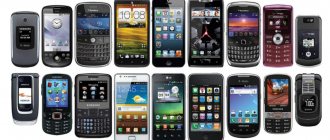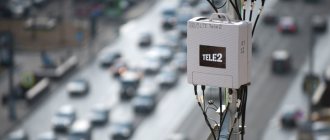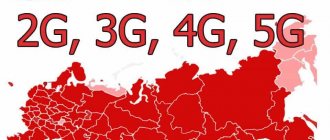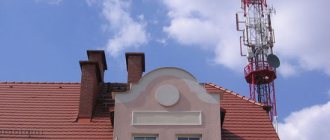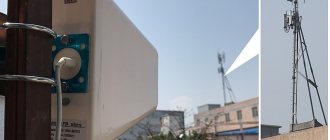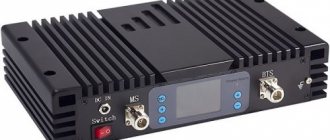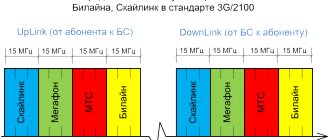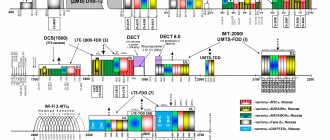It is probably impossible to find a person in Russia who has never made a cell phone call. But not everyone understands how this connection functions. And even more so how cellular base stations are designed and operate. Although they most likely catch the eye of all residents of cities and villages every day. Cellular base stations are located in an open field and close to houses, almost on neighboring roofs. Therefore, it would be useful to know how they look, work and allow us to communicate with neighbors through the wall and relatives thousands of kilometers away.
General information about the base station
To understand what a base station is, you need to have an idea of what cellular networks generally consist of. Experience in the development of mobile technology has led to the division of functions and the logical breakdown of the system into three subsystems. Each of which is a closed element that performs certain responsibilities. This is expedient and allows you to effectively monitor operation, track faults and correct errors in the process of development and operation of mobile communications.
Availability, quality and continuity of communication is achieved thanks to three subsystems:
- operation and maintenance - Operation Subsystem or OSS.
- switching - Switching Subsystem or SSS.
- base cellular stations - Base Station Subsystem or BSS.
In the overall system, the OSS subsystem monitors the quality of data exchange and manages all components. Troubleshooting, load management and equipment operation monitoring are carried out automatically or manually by maintenance personnel.
The switching subsystem is the skeleton of the entire GSM network. It provides switching, home and guest location registration, and subscriber authentication.
And finally, the cell base station subsystem. It includes:
- Transcoders - TRAU.
- Controllers - BSC.
- And directly base cellular stations - BTS.
Transcoders and controllers help the subsystem function, and individual stations are assigned the following responsibilities:
- Radio communication in a specific cell;
- Quality control of data exchange (communication);
- Exchange data between each other;
- Signal power control.
Each base cellular station is the center of a cell, providing data transmission and creating a regulated service area (coverage). This is where the name came from - cellular communications.
The base cellular station itself is a complex of an antenna (antennas), a radio module and a power supply. The antennas receive and transmit, the radio module processes and amplifies the signal, and the power supply supplies the base with electricity. Basic antennas are located on buildings and structures, hills, masts, towers up to 300 m high and simply on poles. In any case, the most noticeable part that stands out from the general landscape is the mast with several antennas. They surround us, often we simply don’t notice them. But the mobile phone is working, which means the transceiver is somewhere nearby.
Are cell towers harmful to your health?
The harm of radiation to human health has long been proven. You just need to figure out how high the risk of getting radiation is while being near a tower and what its consequences are.
Effects of cellular communication waves of different frequencies on the brain
Based on the types of destructive effects of radiation on the body, there are two types of disorders - physiological and psychological.
Psychological – fatigue, decreased level of self-control, uncontrollable outbursts of anger. Physiological – proven influence on all organs of the body.
From the cardiovascular system - disturbances in the functioning of the heart muscle, the risk of cardiovascular diseases and, as a consequence, the possibility of heart attacks and strokes.
From the central nervous system – inhibition of all functions. The result is causeless headaches, loss of strength, constant desire to sleep, irritability.
From the genitourinary system. In men, impotence develops and reproductive functions weaken. Women often experience miscarriages early in pregnancy. Both have various diseases of the genitourinary system.
The influence of mobile communications on the male body
The appearance or sharp exacerbation of previously sluggish, various diseases of a chronic nature. People with allergies may develop asthma. On the part of the endocrine system, a sudden hormonal imbalance, thyroid disease or exacerbation of diabetes mellitus is possible.
Pregnant women and young children are particularly at risk. A child at an early stage of development is susceptible to radiation.
Due to irradiation, the development of severe pathologies or a provoked miscarriage is possible. In nursing mothers, radiation can cause changes in the composition of breast milk. And babies who consume such milk experience changes in the organs of the digestive system and disorders of the nervous system. The child becomes restless and sleeps poorly.
All of the examples discussed above relate directly to people who have received a large dose of radiation. There is no consensus regarding the impact of cell phone bases.
Exposure of the body to radiation after using a mobile phone
At least the World Health Organization has not found any convincing evidence of their harm.
“To date, there is no convincing scientific evidence that weak RF signals emitted by base stations lead to adverse health effects,” is the latest WHO conclusion.
Age plays an important role. Young healthy people have a lower risk of exposure than pensioners or infants.
Types of base stations
First of all, cellular base stations vary in size. According to this parameter they can be divided into:
- femtocells
- pico
- micro
- macro
Femtocell is the smallest and can rather be called an access point. Typically, the cellular operator has no connection with this equipment; it is the property of the consumer, and provides communications for the household or business. The device does not require operator intervention and automatically detects radio parameters and connections to the operator network. It is placed indoors and has dimensions comparable to home routers.
The next largest devices are low-power cellular base stations - Picocells. The device is comparable in size to a laptop or even a laptop computer. Used in areas of potentially large concentrations of Internet users to distribute a local IP/Ethernet network signal. Installed in large office buildings, hypermarkets, exhibition, business and fair complexes. Although they are installed by mobile operators, they are not yet full-fledged base cellular stations.
The next largest and already fully functional cellular communication station is a microcell. Being small in size and weighing up to 50 kg, it provides communication within a radius of up to 5 km.
Its dimensions limit the number of supported subscribers. Therefore, microcells are used in small settlements, to provide local areas of large cities, where there is no need for powerful emitters or there is nowhere to install them. They are almost invisible on the pillars. And recently they have also learned to disguise them as trees.
And finally, full-fledged, powerful cellular base stations that are installed everywhere. Their installation on hills in cities is especially relevant. Outside the city, powerful stations are installed to ensure the largest possible coverage radius, because the installation of each is associated with the creation of at least minimal infrastructure. This is a power line and the possibility of access for installation and maintenance. Therefore, it is easier to install one powerful one than several small cellular communication stations.
The coverage area of each base cellular station depends on the terrain of the surrounding area, the height of the antenna, the amount of interference and obstacles within the radius of cellular communication. Therefore, when planning an installation site, the coverage radius is not always of paramount importance. In addition to the above factors, the possible growth in the number of subscribers is also taken into account. Such growth may trigger restrictions on the simultaneous connection of cell phones. In this case, operators have to reduce the range of the installed one and additionally install several cellular communication stations.
What is radiophobia and why does it occur?
There is no medical diagnosis for radiophobia. Radiophobia refers to neurosomatic mental and physiological disorders, expressed in a person’s unreasonable fear of electromagnetic radiation. The psychotic state is associated with a disordered thinking, impaired perception of reality, lack of awareness of illness, and absurd behavior. A radiophobe physically feels the effects of the waves, and these are symptoms of schizophrenia and a number of other serious diseases.
In the summer of 2021, Russian media immediately reported two cases of damage to cell phone towers by residents. In the Tver region, a man sawed down the support of a tower, the radiation of which, in his opinion, destroyed the harvest of vegetables and fruits on his site. And a resident of the Sverdlovsk region tried to burn down the tower. The arsonist suffered from malaise and insomnia and linked the cause of her poor health to a communications tower located not far from her house.
– A phobia is a painful, obsessive and unreasonable fear that grips a person in certain situations and causes autonomic disorders, for example, increased heartbeat and sweating. A person suffering from a phobia tries to avoid situations and objects that cause fear, explained Alexander Sednev, deputy head physician of the Voronezh Regional Clinical Psychoneurological Dispensary. – Fear and phobia have common features – discomfort, internal tension, which interfere with living a peaceful life. In all other respects, they differ greatly in terms of their impact on well-being, self-awareness, and quality of life in general. Fear is a normal, healthy feeling that occurs as a reaction to potential danger and allows you to avoid life-threatening situations. A phobia is a state of obsessive fear that cannot be overcome. It forces your fantasies to fully engage and draw pictures in your brain, one more terrible than the other, in the center of which is an object or event. A person suffering from phobias exhibits vegetative reactions: he may blush or turn pale, tremors appear, sweating increases, breathing and pulse quicken, palpitations and shortness of breath begin. To avoid unpleasant sensations, people with a phobia are forced to avoid the object of their fear, no matter whether it poses a real threat. Along with fear, anxiety is also necessarily present in the symptoms of phobias.
According to the doctor, if a person is afraid of something, this does not mean that he has a phobia:
– In most cases, we do not experience pronounced fear when coping with potentially dangerous situations that fill the life of a modern person. The less knowledge, the higher the level of anxiety. Most of us instinctively assess the level of real danger for ourselves or our loved ones and choose a way to overcome it.
Alexander Sednev noted that the disease and its causes can only be identified by a psychologist, psychiatrist or psychotherapist.
Cellular base station equipment
Structurally, all gsm and lte base stations consist of three main components. This is an antenna, a radio unit and a power supply system.
Visually, the location of the cellular base station can be determined by the antennas. This is a required element of the device. It is the antennas that receive and transmit signals between themselves and subscribers. The antenna is a very important part of the base, on which the quality of mobile communications depends. Such towers with antennas have already become a familiar feature of urban and rural landscapes.
To communicate with the network (neighboring stations), optical fiber is used. If this is difficult to do or is not at all possible, then a relay communication antenna is also installed on the mast. It looks like a dish and looks a bit like satellite dishes.
From the antennas, the signal is sent to radio units, which are installed openly (outside) or in special rooms.
Radio units heat up during operation. Therefore, indoor equipment rooms require forced cooling using air conditioning. External ones are cooled naturally.
The third main component of base stations is the power system. It includes an AC-DC converter with control and protective equipment. And of course batteries for uninterruptible power supply.
The rest of the equipment ensures the normal functioning of the main systems, and is located in the room itself or next to it in special cabinets or containers. These are climate control (air conditioning and heater), ventilation and security systems, fire-fighting devices and other auxiliary equipment.
Physical features of cell tower radiation
According to SaNPiN standards, radiation at an energy flux density of 0.1 W per square meter is considered conditionally safe. Flux density is the amount of energy passing through a certain area. If the antennas radiated in a circle, the risk would be minimal. But such equipment has a directionality of radiation.
Conventional cellular antennas have a gain from the base station (BS) of up to 20W.
Table of ranges of electromagnetic radiation of waves of different lengths
As the distance increases, the density decreases, that is, after making all the calculations, we get a safe distance of 45 meters.
The principle of operation of the base station, how they communicate with each other
The convenience of using mobile communications lies in freedom of movement. We can walk or drive a car and still talk on the phone. We move around, but the connection is not interrupted. Continuity is ensured by the ability of a switch or, otherwise, a Mobile Switching Center to instantly switch a subscriber from the coverage area of one base cellular station to another. This can be seen schematically in the figure.
In this case, the subscriber can move without interrupting the conversation not only between antennas, but from one controller to another. Effective base station technologies will allow you to travel thousands of kilometers without interrupting the conversation. If, of course, you have enough money for roaming.
At the same time, the switches provide not only continuous communication in the network, but also optimal load distribution on the base antennas. This is done to ensure a high-quality signal, eliminate overload of individual segments (cells) and reduce the likelihood of equipment failure.
All this happens instantly, the delay occurs only during the initial connection and can be up to three seconds. This happens because a chain of events must occur. Namely:
- The signal must reach the switch.
- It transfers the call to the recipient's side (to international or long-distance networks, to a city PBX, or to another mobile operator). This happens quickly using fiber optic cables or microwave links.
- The call then goes to the receiving party's switchboard. This switch already has data about the location of the called subscriber. Namely, in which cell it is located and to which base antenna it is closest.
- And now the recipient has received a call.
Briefly, we can say that subscribers communicate with each other through the BS, and the cellular stations are connected by the Switching Center.
How does cellular communication work?
The total coverage area is divided into sections (cells), determined by the coverage areas of individual base stations. The cells partially overlap and together form a network. A certain part of a settlement or territory is served by several base stations connected to a special unit - a local zone controller.
– The cell phone and the base station maintain constant radio contact. When making a call, the phone contacts the nearest base station and “asks” for a voice channel. The base station sends a request to the controller, which forwards it to the switch. The switch finds out where the called subscriber is currently located and transfers the call to the appropriate switch, from where it will forward it to the controller, then to the base station, which connects to the required phone,” explained Alexander Grechishnikov, technical director of the Chernozemye macro-region of Tele2.
In recent years, one of the parameters by which communication quality is assessed is Internet speed. Almost 20 years ago we used a 2G network up to 364 Kbps, later we had 3G access up to 42 Mbps, then we began to use 4G speeds up to 100 Mbps, and now operators in the regions are actively launching transmission technology LTE-Advanced data up to 300 Mbit/s. They all operate in different frequency ranges - the paths along which transmitted information follows. For 2G, 900 and 1800 MHz are sufficient, 3G – 900 and 2100 MHz, 4G operates in all frequency ranges, including 2600 MHz. LTE-Advanced technology currently allows you to download traffic at maximum speed, not only because it operates in the widest range (2600 MHz), but also because it combines two radio frequencies at once (20 MHz + 20 MHz). It is clear that the larger the frequency range, the wider the road and the faster the signal travels, the more subscribers can simultaneously download information.
How to identify a base station on a map
Sometimes situations arise when the connection is lost and data cannot be transferred. Such cases occur due to the remoteness or low power of the base antennas or many obstacles to the signal. I would like to find a place for stable reception and comfortable conversation. This is quite easy to do if you have a smartphone in your hands or are near a computer. Using applications for phones and websites on the Internet, it is not difficult to determine the location of base stations on a map and the signal level.
Many programs have been developed for phones that can be downloaded from websites or app stores. The application will find the base antenna on the map, determine the signal level and coordinates. For example, for Android, the following applications will be useful:
- GSM Monitor
- Gsm Signal Monitor
- Antennas
- Network Signal Strength
- Cell Phone Coverage Map
- Network Signal
And many others.
For iOS devices there are fewer choices, these are:
- Signal 2
- Find Tower - Locate 4G antenna
But from the iPhone, as well as from the computer, you can always access the Internet and determine the surrounding stations. This can be done on operator websites and popular third-party services. Such as an English-language site - opensignal.com or a site in Russian - netmonitor.ru or xinit.ru. The lack of information on the sites is the lack of information about the signal strength of the nearest base antennas.
There are four main reasons for losing connection to the network
Firstly , interference can be caused by a faulty device, an old SIM card, or even the wrong material for the case. If the case on your smartphone is made using a copious amount of metal, then there will probably be problems with calls.
Secondly , connection breaks can occur in places where there are “holes” in the coating. If the nearest base stations are too far away from you, or you are too high or low in relation to them. Usually they are built in such a way that the field of their covering overlaps. However, this is not always possible due to the geography of the area and may not be practical due to the overall low population of a particular region.
Cellular coverage in the Russian Federation and nearby countries. Source: reddit.com
You encounter this while traveling by car or train. The farther you are from the city, the worse the connection is usually. On some sections of the road it may not exist at all, and there is nothing strange or supernatural about this.
Thirdly , breaks are often associated with network overvoltage. It can occur when the stations closest to you are already handling too many calls. The most typical moment for this is major holidays. How many times has this happened to everyone: you call an old friend to wish him a Happy New Year, and in response you hear only silence. The call is dropped, short beeps begin, and this repeats over and over again. Until the station is unloaded, you won't be able to make a call.
Fourthly , each operator determines for itself a priority operating mode - the type of connection that is offered to customers first. For local companies this is 3G. If he cannot provide at least this, the connection may fail.
Maintenance of mobile communication base stations
Any equipment requires periodic prevention and maintenance. A typical inspection includes taking electrical meter readings, testing the power supply, and inspecting the electronics, mast, antennas, and cables. In emergency situations, service engineers do not act blindly. To track problems, there is a remote equipment monitoring system. Therefore, they know in advance about possible problems, and the breakdown of any element does not cause panic among employees of cellular companies. Modern cellular stations are assembled using a modular system; blocks can be changed quite easily and quickly. Servicing of cellular base stations is structured in such a way that problems are resolved immediately and subscribers always remain connected.
To monitor the general operation of cellular networks, there is special equipment, which is usually permanently installed in a car. Such a laboratory on wheels is used to evaluate signal quality in various parts of cities and when traveling into open areas. Moreover, companies monitor both their own and competitors’ networks.
Another way companies monitor their networks is by using a base station simulator. It is needed to search, identify and detect devices for covert information collection and eavesdropping on cellular subscribers. Cellular companies strive to protect themselves and their customers from secret intrusion into data exchange and wiretapping of telephone calls.
